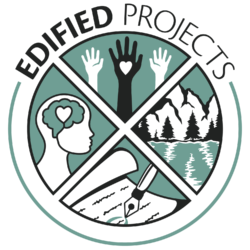A magician’s sleight of hand reveals a silver dollar from behind your ear. How did they do that?! There’s something awe-inspiring about a magician and their tricks, leaving us both amazed and frustrated as we wonder how they picked our card out of a deck or pulled a rabbit from their hat. But here’s the twist: the magic of Diversity, Equity, and Inclusion (DEI) isn’t a trick at all. Too often, DEI is seen as someone else’s job, confined to specialized teams or committees. But here’s the exciting part: DEI is for everyone, and it can be seamlessly integrated into your daily work, no matter your role or industry.
Why DEI Matters for Everyone
Embedding DEI in your professional practice isn’t just a matter of policy compliance or social responsibility. It’s about leveraging the full potential of diverse perspectives to drive better outcomes. Research consistently shows that diverse teams are more creative, better at problem-solving, and achieve higher financial returns.
Despite knowing the benefits of fostering inclusive environments, many of us feel uncertain about where to start, especially if DEI isn’t our main focus. But here’s the fun part: everyone can play a role in making our workplaces more inclusive!
Practical Steps to Integrate DEI
Self-Education and Awareness: Dive into DEI principles that fit your role, whether you’re in IT, marketing, or customer service. There’s a treasure trove of webinars, articles, and training sessions out there to help you. Check your workplace learning management system or your professional association for courses.
Inclusive Communication: Evaluate your communication style and practices. Are you using inclusive language? Are you actively listening to and valuing the input from all team members? Small changes in how we communicate can make a big difference in making everyone feel valued and heard.
Equitable Opportunities: Advocate for and contribute to equitable practices within your team. This could mean ensuring everyone has access to professional development opportunities, recognizing and mitigating unconscious biases in hiring and promotions, or supporting flexible work arrangements to accommodate diverse needs.
Making DEI a Part of Your Routine
Integrating DEI into your daily routine doesn’t require a complete overhaul of your work processes. It’s about being intentional with your actions and decisions. Consider how you can incorporate DEI into meetings, project planning, client interactions, and even in casual workplace conversations. By consistently applying a DEI lens, you’ll help create an environment where everyone feels respected and empowered to contribute their best.
DEI at Home: Empowering Stay-at-Home Caregivers and Parents
DEI principles aren’t just for the office—they’re equally important at home. Stay-at-home caregivers and parents can also weave DEI into their day-to-day work. By teaching children about the value of diversity, encouraging inclusive play, and fostering an environment where everyone’s voice is heard and respected, caregivers can build a foundation of empathy and understanding. Reading books from diverse authors, celebrating different cultural traditions, and discussing the importance of equity can help raise the next generation of inclusive thinkers and leaders.
Your Role in the Bigger Picture
Remember, DEI is not solely the responsibility of HR or designated DEI officers. Each of us has a role to play in fostering a diverse, equitable, and inclusive workplace. Your efforts, no matter how small they may seem, contribute to a larger culture shift towards inclusion.
Not sure where to start?
Reach out to us at Edified Projects to discuss how you can integrate DEI principles into your professional practice.
Image by Ahmed Sheraz on Unsplash


